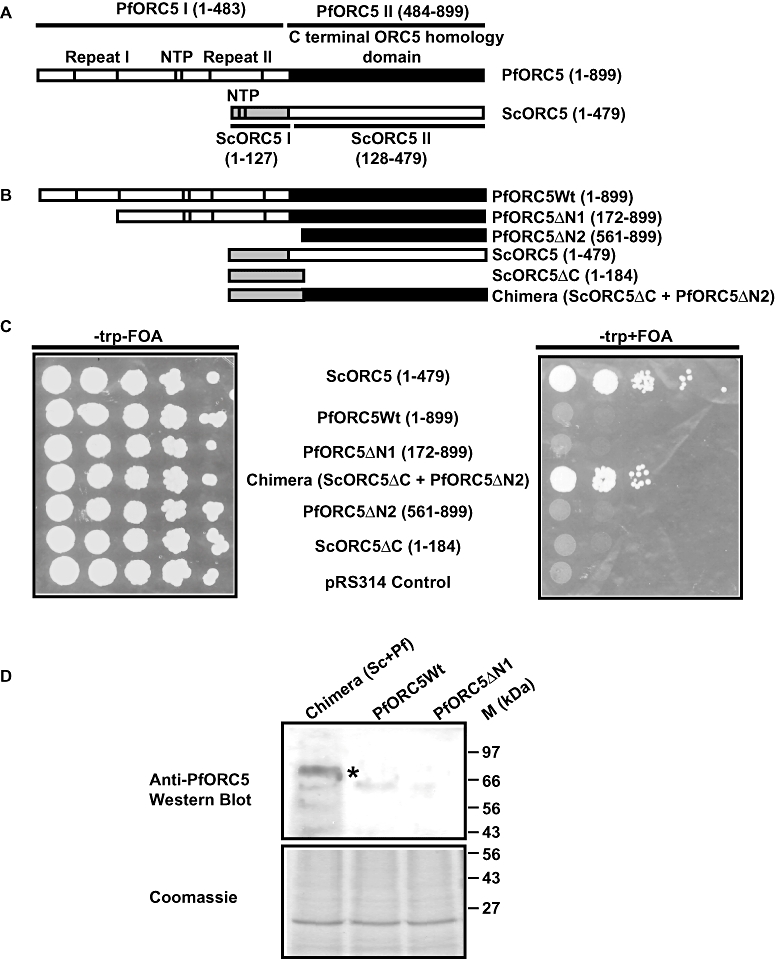Fig. 2.

Complementation of PfORC5 in S. cerevisiae.
A. Schematic diagrams of PfORC5 and ScORC5. The repeat regions (I and II) and NTP binding domains are shown as open boxes whereas the filled box shows the C-terminal ScORC5 homology region. The grey box in ScORC5 shows the N-terminal region containing NTP binding domain. Both PfORC5 and ScORC5 can be divided into two parts (I and II) respectively.
B. The schematic diagrams show different regions of PfORC5 and ScORC5 or the chimera containing N terminus of ScORC5 and C terminus of PfORC5 as used for complementation assay. The rationale for chimera construction has been described in Results section and supplementary method section.
C. A swapper strain of S. cerevisiae ORC5 with the deletion of chromosomal copy of ScORC5 gene and maintaining the same gene with a plasmid containing ura marker was transformed with either wild-type or different chimeras of PfORC5 and ScORC5 (with trp selection) either in the presence or absence of 5-fluoroorotic acid. Growth of these transformants was followed by spot test using serial dilutions.
D. Western blot analysis to show the expression of different constructs as used in the complementation assay. Anti-PfORC5 polyclonal antibodies were used for Western blot analysis. The coomassie-stained gel following protein transfer on PVDF membrane is shown as loading control. * indicates the expression of chimera protein in yeast. The molecular mass marker is shown on the right.
